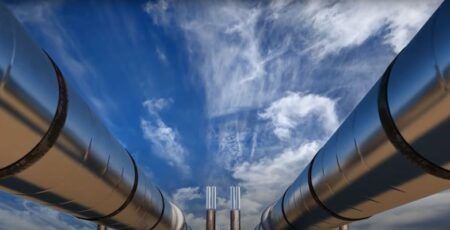Elon Musk’s launch company SpaceX launched Starship, the largest rocket ever made earlier this month for its third test flight.
Starship, which is 120m (393ft) high and weighs 5,000 tonnes when fully fueled, successfully lifted off on March 14 from the company’s base in Texas, USA. The launch system comprises of the main Starship vehicle and the Super Heavy Booster rocket, which uses 33 SpaceX Raptor engines.
Both Starship and Super Heavy were destroyed on re-entry during the test. Nevertheless, SpaceX heralded the achievement of several key testing goals for Integrated Flight Test-3 (IFT-3) including Starship’s first orbital flight.
“Each of these flight tests is just that – a test,” SpaceX said in a statement before IFT-3. “They aren’t occurring in a lab or on a test stand but are putting flight hardware in a flight environment to maximize learning.”
Two previous test flights last year ended prematurely with the Super Heavy and Starship exploding before the mission ran their course. IFT-3 lasted approximately 49 minutes, 14 minutes short of its 65-minute predicted mission time.
Super Heavy’s Raptor engines all fired successfully during the launch, before Starship separated to coast 145 miles (230km) above the Earth, with its six engines all firing correctly.
During the coast phase several tests were conducted, including the opening and closing of Starship’s payload door and the initiation of a propellant transfer demonstration. Engineers had hoped to demonstrate other flight systems needed for vehicle qualification during this phase, including the reignition of Starship’s engines and the full transfer of cryogenic fuel between tanks.
However, the planned reignition did not occur because of vehicle roll rates during the coast. Meanwhile, Super Heavy completed a flip maneuver and a burn to send it toward a splashdown point in the Gulf of Mexico.
Starship’s first-ever entry from space provides valuable data on heating and vehicle control during hypersonic reentry, said SpaceX. Post-flight its engineering team is reviewing data, while preparing Starship and Super Heavy vehicles for upcoming flights. The company has four sets of vehicles built.
NASA plans to use Starship for the Artemis 3 mission, which aims to send humans back to the Moon for the first time since 1972’s Apollo 17 mission. Artermis-3 is scheduled to launch in 2026, meaning SpaceX must achieve a high cadence of test flights to meet NASA qualifications in the next two years.
Starship will be fully reusable with the Super Heavy returning to the launch tower and caught using two arms, although IFT-3’s plan was for Super Heavy to splash down in the Gulf.
SpaceX said: “Rapid iterative development has been the basis for all of SpaceX’s major innovative advancements. Recursive improvement is essential as we work to build a fully reusable transportation system capable of carrying both crew and cargo to Earth orbit, help humanity return to the Moon, and ultimately travel to Mars and beyond.”




